Physical Address
304 North Cardinal St.
Dorchester Center, MA 02124
Physical Address
304 North Cardinal St.
Dorchester Center, MA 02124
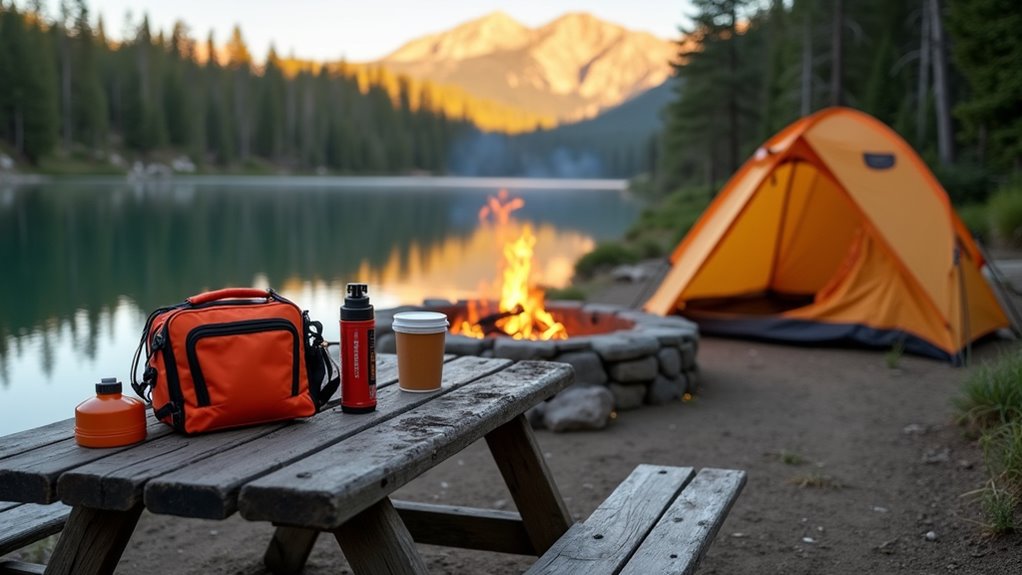
Crucial camping mistakes can turn your dream getaway into a nightmare—discover the insider strategies that separate seasoned campers from frustrated beginners.
You’ve probably experienced that sinking feeling when your tent starts leaking at 2 AM or you realize you’ve forgotten the can opener halfway through your trip. Smart camping isn’t about buying the most expensive gear—it’s about making practical decisions that’ll keep you safe, comfortable, and within budget. Whether you’re a weekend warrior or planning your first family adventure, there are specific strategies that separate memorable trips from miserable ones.
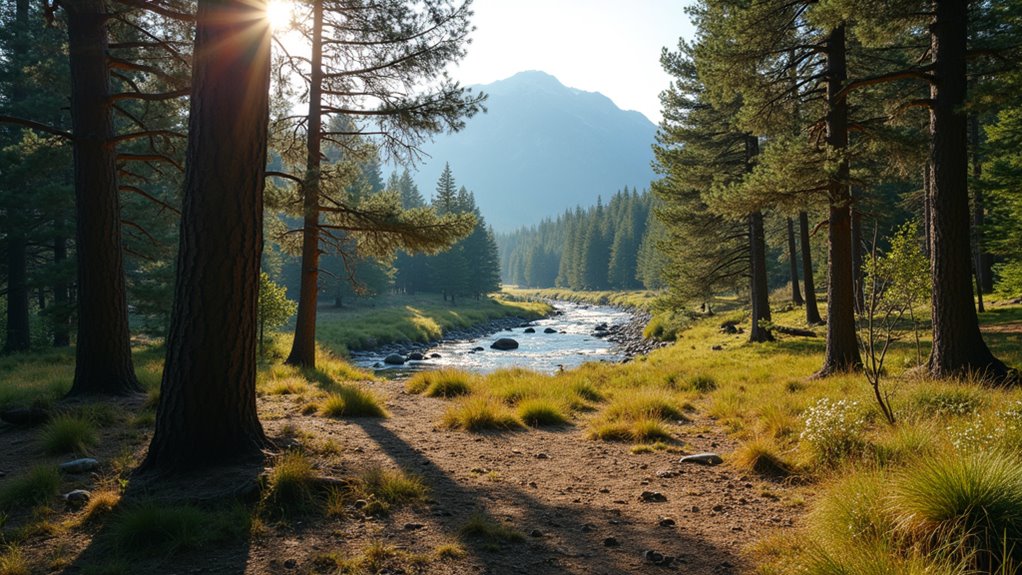
When you’re planning your camping adventure, selecting the right campsite can make or break your entire trip. Consider your group’s experience level first – beginners should stick to established campgrounds with amenities like restrooms and potable water.
Your campsite choice determines whether you’ll have an amazing outdoor experience or wish you’d stayed home instead.
Check the terrain carefully; avoid low-lying areas that’ll flood during rain and steep slopes that make sleeping uncomfortable.
Look for natural windbreaks like trees or rock formations, but don’t camp directly under dead branches. Confirm you’re near a water source but not too close to avoid bugs and wildlife encounters.
Research campsite fees beforehand – state parks often cost less than private campgrounds while offering similar amenities. Book popular spots early, especially during peak seasons, to secure your preferred location and avoid disappointment.
If you’re bringing your furry companion along, ensure the campsite allows pets and has adequate space for your dog to exercise safely while remaining under your supervision and control.
After securing your perfect campsite, you’ll need the right gear to keep yourself safe and prepared for unexpected situations. Start with a well-stocked first aid kit containing bandages, antiseptic, pain relievers, and any personal medications.
Pack a reliable flashlight with extra batteries, plus a backup headlamp for hands-free lighting.
Don’t forget a sharp knife, waterproof matches, and fire starter for emergencies. A whistle can signal for help if you’re lost or injured. Include paracord or rope for repairs and shelter building.
Pack an emergency blanket – they’re lightweight and retain body heat effectively.
Finally, bring a portable water filter or purification tablets. These items don’t cost much but could save your life when things go wrong.
Your first-aid kit should be easily accessible and checked before each trip to ensure all supplies are current and properly stocked.
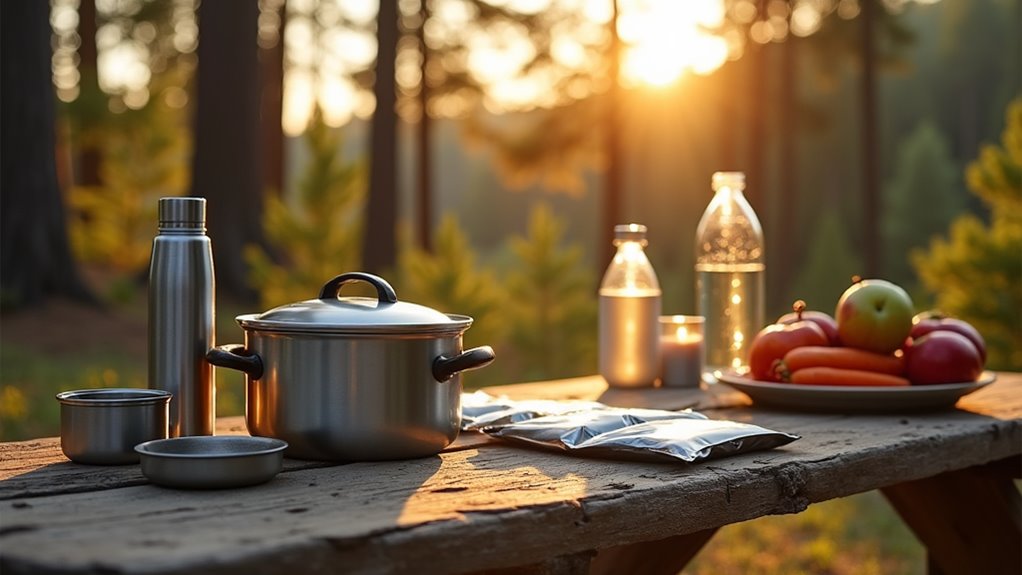
Since camping trips can stretch for days without access to grocery stores, you’ll want to map out every meal and snack before you leave home. Create a detailed meal plan that includes breakfast, lunch, dinner, and snacks for each day.
Choose non-perishable foods like canned goods, dried fruits, nuts, and pasta that won’t spoil without refrigeration.
Calculate how much water you’ll need—about one gallon per person per day for drinking, cooking, and basic hygiene. Research water sources at your campsite and bring purification tablets or a portable filter as backup.
Pack extra food and water beyond your calculated needs in case of emergencies or delays.
Pre-cook meals at home when possible to save time and fuel at camp.
Look for quick camping recipes that require minimal preparation and cooking time to make your outdoor dining experience both easy and enjoyable.
Before you even unpack your sleeping bag, you’ll want to scout the perfect spot for your tent. Look for level ground that’s slightly elevated to avoid water pooling during rain. Clear away rocks, sticks, and debris that’ll poke through your tent floor.
Fifteen minutes scouting beats eight hours of discomfort – find level, elevated ground and clear away anything that’ll jab you through the night.
Here’s your shelter setup checklist:
Don’t rush this process. Taking fifteen extra minutes now saves you from a miserable night later. Practice setting up your tent at home first, so you’re not fumbling with instructions in fading daylight. Remember that your camping style will influence your shelter choices, so consider whether you prefer minimalist backpacking setups or more comfortable car camping arrangements.
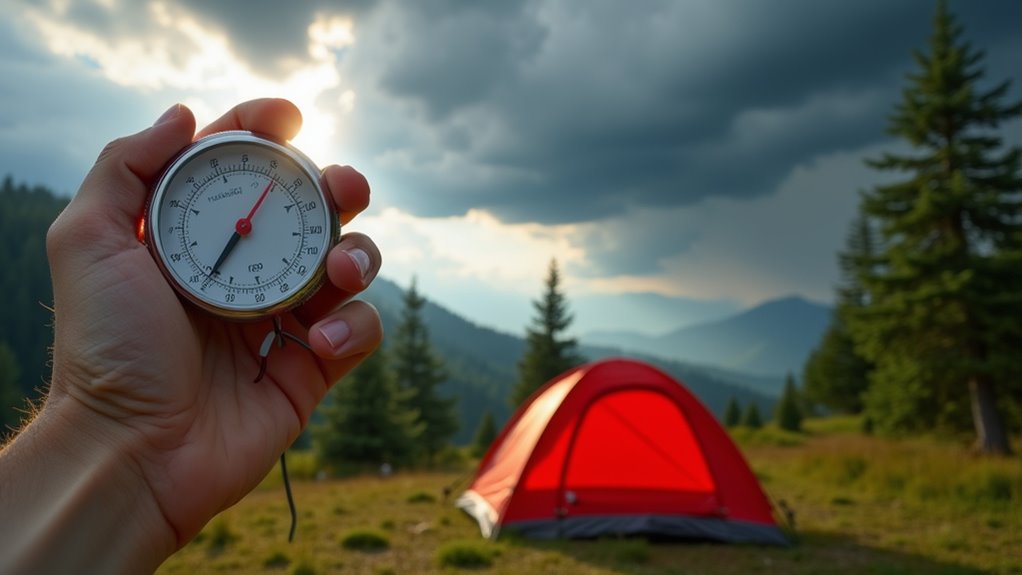
Weather can make or break your camping experience, so you’ll want to check forecasts well before you hit the trail. Don’t just glance at your phone’s weather app—dig deeper into local conditions. Mountain weather changes rapidly, coastal areas bring fog and wind, and desert temperatures drop dramatically at night.
Check multiple sources like NOAA Weather Radio, local ranger stations, and specialized outdoor apps that show hourly breakdowns.
Look beyond temperature to understand precipitation chances, wind speeds, and severe weather alerts.
Plan your gear accordingly. Pack rain gear if there’s even a slight chance of storms, and bring extra layers for unexpected temperature drops.
Many free weather apps provide detailed camping-specific forecasts that’ll save you from uncomfortable surprises and potentially dangerous situations. Consider bringing a weather radio as a reliable backup for receiving emergency broadcasts when cell service is unavailable.
While campfires create memorable moments around the camp, they’re also one of the biggest safety risks you’ll face outdoors. Before striking that first match, check local fire restrictions and obtain necessary permits.
Campfires bring joy but demand respect—always verify local restrictions and secure permits before lighting your first flame.
Choose established fire rings when available, or create a safe area by clearing vegetation in a 10-foot radius.
Follow these essential fire safety practices:
Stir ashes with water until they’re cold to touch. This prevents underground embers from reigniting hours later, potentially causing devastating wildfires. Learning proper techniques for building a campfire ensures both safety and efficiency during your outdoor adventures.
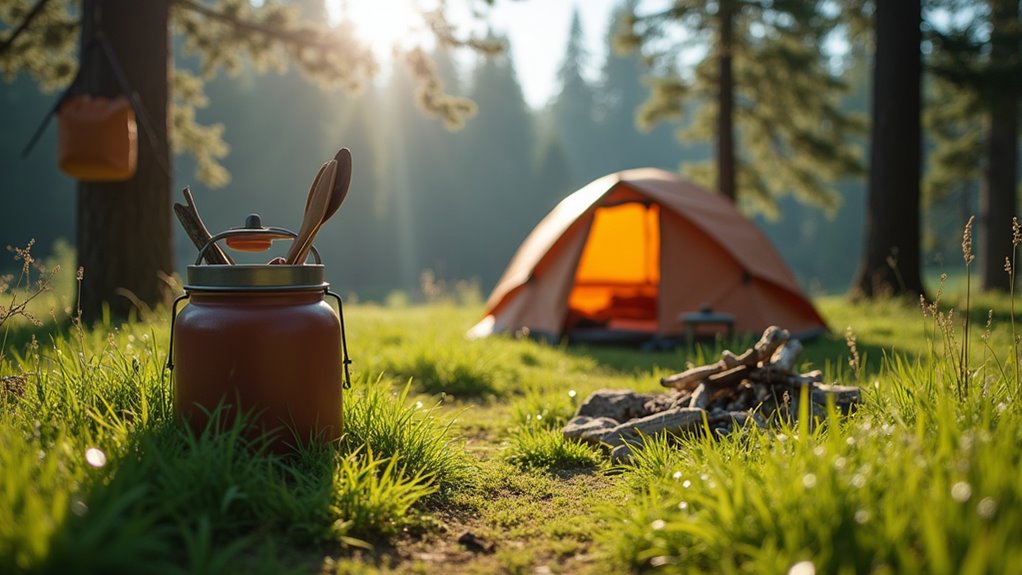
Fire safety keeps you protected from one outdoor hazard, but wildlife encounters present an entirely different set of challenges that require smart preparation and awareness.
Store all food, toiletries, and scented items in bear-proof containers or hang them at least 12 feet high and 4 feet from tree trunks. Never feed animals – it’s dangerous and illegal in most areas.
Make noise while hiking to avoid surprising wildlife. If you encounter a bear, don’t run. Back away slowly while facing the animal and speak calmly.
For smaller animals like raccoons, secure your campsite and garbage. Keep a clean camp to avoid attracting unwanted visitors.
Research the specific wildlife in your camping area beforehand and pack appropriate deterrents if necessary.
As a first-time camper, understanding these wildlife safety basics will help build your confidence and ensure a more enjoyable outdoor experience.
Although you’ve taken precautions to avoid wildlife encounters, accidents can still happen in the wilderness where professional medical help may be hours away. That’s why mastering basic first aid is essential for every camper.
Pack a thorough first aid kit and learn these fundamental skills before heading out:
Practice these techniques at home so you’ll react confidently during real emergencies.
Your preparation could save lives. Whether you’re planning adventure camping or a more relaxed outdoor experience in Wyoming’s beautiful wilderness areas, having these life-saving skills will give you confidence to fully enjoy your getaway.
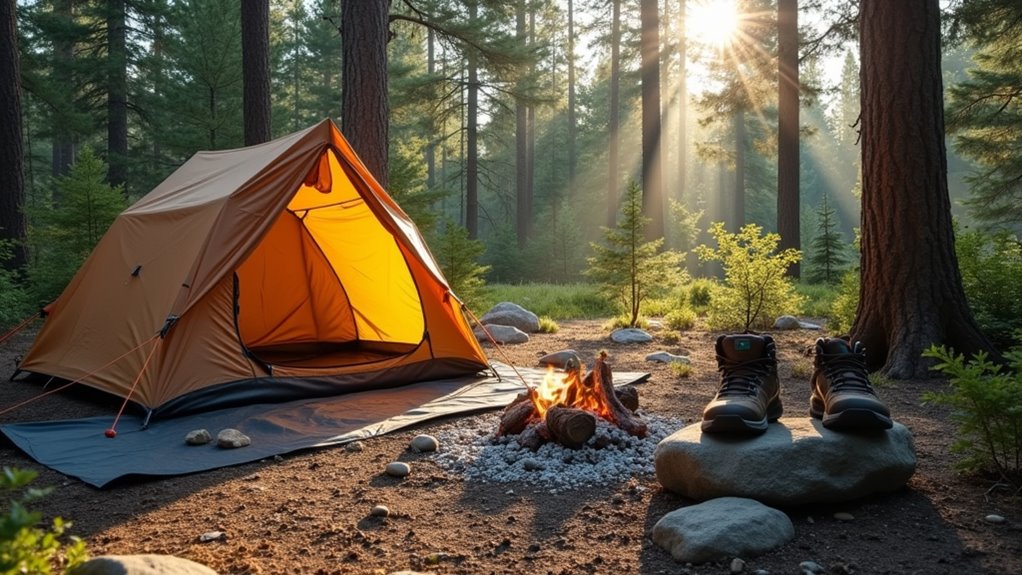
When you’re exploring nature’s beauty, you become a temporary guest in someone else’s home—and that someone includes countless wildlife species and future generations of outdoor enthusiasts. Leave No Trace isn’t just a catchy phrase—it’s your responsibility as a camper.
Pack out everything you bring in, including food scraps and toilet paper. Camp on established sites rather than creating new ones. Keep campfires small and use existing fire rings when available. Respect wildlife by storing food properly and observing animals from a distance.
Travel on durable surfaces like established trails and rock. Dispose of waste water 200 feet from water sources. Don’t pick flowers or move rocks—leave natural objects where you found them. These simple practices ensure camping remains enjoyable and accessible for everyone. Following these responsible camping guidelines helps preserve natural areas for wildlife and future campers to enjoy.
Even seasoned campers encounter unexpected hurdles that can quickly turn a peaceful getaway into a stressful situation. You’ll face challenges, but preparation makes all the difference. Pack smart solutions that won’t break your budget.
Common camping problems and their fixes:
Don’t let minor setbacks ruin your adventure. These simple, affordable solutions will keep you comfortable and confident outdoors. Expecting moms should take extra care with preparation to ensure their camping experience remains both safe and enjoyable.
You’ve got all the tools in your toolkit now to tackle the great outdoors like a pro! Remember, you don’t need to break the bank on fancy gear – smart planning beats expensive equipment every time. Trust your preparation, respect nature, and you’ll create memories that’ll last a lifetime. Stay alert, stay safe, and most importantly, have fun out there. Your perfect camping adventure’s just around the corner!